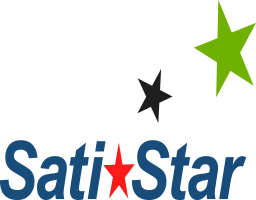Basic Statistical Techniques
Overview
This course is designed to provide participants with the statistical tools needed to drive improvement of business processes throughout the entire organization. Participants will learn how to select the most appropriate statistical tool, and then will have an opportunity to implement SPC within their own jobs.
Approach
Held in a workshop format, this 4-day course is designed to teach participants the application of basic statistical process control techniques. The focus of this workshop is to enable participants to stabilize and to achieve improvements in the output of processes. Unlike typical SPC courses that only teach control charting techniques, this workshop enables participants to learn how to actually achieve measurable gains in the output of their processes. The intent is to significantly reduce the process variation and to improve quality.
Participants will learn through lecture, class discussions, class exercises, case studies and team breakouts. This workshop is often greatly enhanced by the inclusion of real-life company data (for in-house courses). Participants have the opportunity to apply SPC tools to a number of actual plant or office situations. It can also be customized to be spread out over a number of weeks—to enable participants to practice the application of the techniques.
SatiStar’s experts can follow-up this training with on-site consultants to ensure that the use of the tools is applied effectively.
What You Will Learn
Introduction:
- Hierarchy of statistical techniques
- history of statistical quality control
- Viewing business processes as a system
- Taguchi’s economic loss curve
- Shewhart’s concept of a process
- Two types of variation (Shewhart / Deming)
- Dr. Deming’s 14 Points
Simple quality improvement tools
- Overview of simple statistical tools for quality improvement
Fundamental concepts of statistical improvement
- Stability / Capability
- Deming Responsibility Assignment Matrix
Process improvement using statistical methods
- Process improvement process
Process analysis techniques
- Run charts
- Histograms
Using control charts for process improvement
- The normal distribution
- Mean, standard deviation
- Variables vs. attributes data
- Central Limit Theorem
- Sigma of the averages vs sigma of the individuals
- How the control chart works
- Two types of errors
- The types of control charts
The Xbar, R charts
- Why 2 charts? (Performance vs. variability)
- PFD on how to create the Xbar, R charts
- Rational subgrouping
- Subgroup order
- Subgroup size
- Tests for Out-of-control signals
- Out of control limits
- Length of run
- Trends
- Number of runs
Process Capability Other variables control charts
- Median charts
- Moving average, moving range charts
- Supplementary line charts
- Individuals, moving range charts
- Control charts for unstable processes
- Autocorrelation
- Trend
- Seasonality
Adjusting Processes (Funnel experiment) attributes control charts
- np charts
- p charts
- c charts
- u charts
Measurement system analysis
- Accuracy vs. precision
- Measurement system capability index
Training Outcomes
This course is primarily targeted at manufacturing, engineering, maintenance, technical, quality, management, and other support staff. Other people who may consider attending include sales and customer support personnel.
WHAT PEOPLE ARE SAYING
SatiStar's Experience Makes The Difference!
